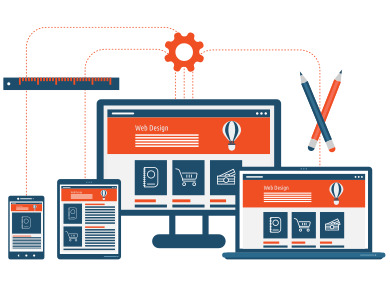Stay ahead with essential web design trends for businesses. Discover insights from a leading web design company in London. Unlock your potential!
Web design is not just about aesthetics; it's a powerful tool influencing user experience, engagement, and conversion rates. As we delve into the world of web design, it is crucial to stay updated with the latest trends that can help your business stand out from the competition. This article explores the key trends shaping web design in the coming years, providing insights that every business should consider to ensure their website remains relevant and engaging.
By harnessing these trends, companies can create user-friendly experiences that resonate with their target audience.
As a prominent web design company in London, we understand the importance of these trends and are here to guide you through the essential elements of modern web design.

The Rise of Minimalist Design
Minimalist design continues to dominate the web design landscape, focusing on simplicity and functionality.
- Clean Aesthetics: Minimalist design emphasizes clean lines and uncluttered interfaces, making it easier for users to navigate and find information.
- Faster Load Times: By minimizing the number of design elements, websites experience improved load times, essential for retaining user attention.
- Enhanced Usability: A simpler layout translates to better usability, allowing users to complete tasks efficiently, which is crucial for conversion.
- Focus on Content: This strategy puts the content front and center, ensuring clear, distraction-free messaging.
- Mobile Responsiveness: Minimalist designs often translate better to mobile devices, accommodating the increasing number of smartphone users accessing websites.
- Branding Cohesion: A minimalist style can enhance a brand's identity by creating a consistent and cohesive look across various platforms.
- Sustainable Design: With fewer elements to manage, minimalist websites can reduce energy consumption, aligning with eco-friendly practices.
- A Timeless Appeal: Minimalism has proven to be a timeless trend, ensuring that websites remain relevant even as design styles evolve.
The Importance of Responsive Design
Responsive design is no longer optional; it’s essential for ensuring a seamless user experience across devices.
- Adaptable Layouts: Responsive design allows websites to adapt seamlessly to different screen sizes, enhancing usability on both smartphones and desktops.
- Improved SEO Performance: Google prioritizes mobile-friendly websites in its rankings, making responsive design vital for achieving high visibility in search results.
- Single URL for All Devices: With responsive design, there’s no need for multiple URLs, simplifying management and improving user experience.
- Consistent User Experience: Users enjoy a uniform experience whether on a mobile device or desktop, increasing engagement and satisfaction.
- Increased Conversion Rates: A seamless experience across devices leads to higher conversion rates, as users are more likely to complete purchases or sign-ups.
- Cost-Effective Maintenance: Maintaining a single responsive site is more cost-effective than managing separate mobile and desktop versions.
- Future-Proofing: As new devices emerge, responsive design ensures that websites remain functional and aesthetically pleasing.
- Accessibility Considerations: Responsive designs improve accessibility, allowing all users, regardless of device, to engage with the content effortlessly.
The Power of Interactive Elements
Web designers are increasingly incorporating interactive elements to increase user engagement and retention.
- Engaging User Experience: Incorporating interactive elements, such as quizzes or polls, makes the user interaction more engaging and enjoyable.
- Improved User Retention: Interactive features can keep users on the site longer, reducing bounce rates and increasing the chances of conversion.
- Data Collection: Interactive elements allow businesses to gather valuable data about user preferences and behaviors, informing future strategies.
- Visual Storytelling: Interactive designs can tell stories more effectively, using animations or scroll-triggered effects to captivate audiences.
- Social Sharing Features: Allowing users to share their experiences or content directly from the site encourages organic promotion and a broader reach.
- Gamification: Adding gamified elements, such as rewards or leaderboards, can enhance engagement and encourage repeat visits.
- Feedback Mechanisms: Incorporating feedback options enables businesses to learn from users, improve services, and address concerns directly.
- Enhanced Brand Loyalty: Engaging experiences foster emotional connections, leading to increased brand loyalty and customer retention.
Embrace Web Design Trends for Success
As the digital world evolves, staying informed about key web design trends is crucial for businesses aiming to thrive in a competitive landscape. From minimalism to responsive design and interactive features, each trend offers unique benefits that can enhance user experience and drive conversions. Leveraging these elements not only improves a company's online presence but also builds lasting relationships with customers.
If you want to learn more about how to implement these trends effectively, consider reaching out to a professional web design company in London. At DigiNow, we are equipped with the knowledge and expertise to help you navigate the ever-changing web design landscape.